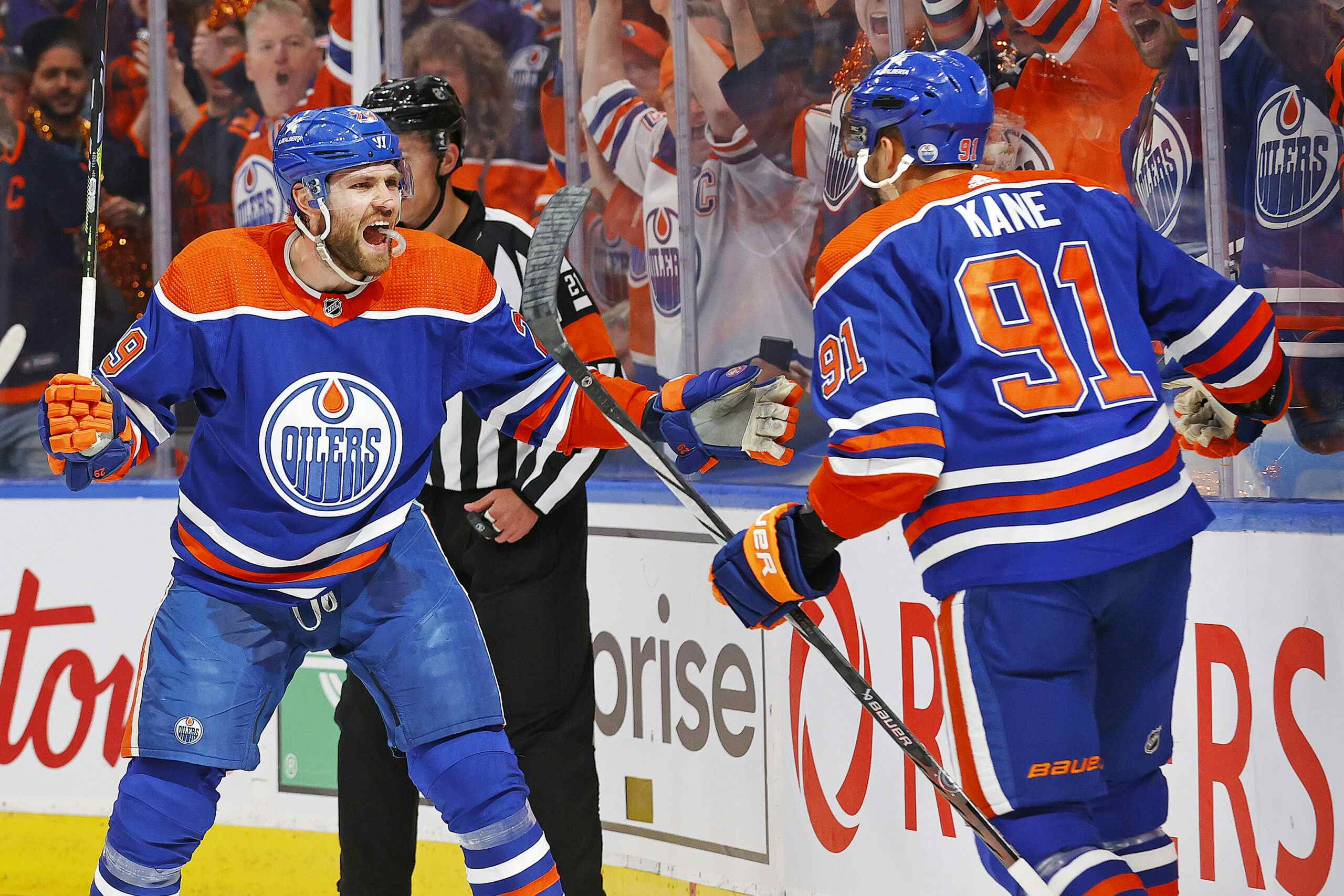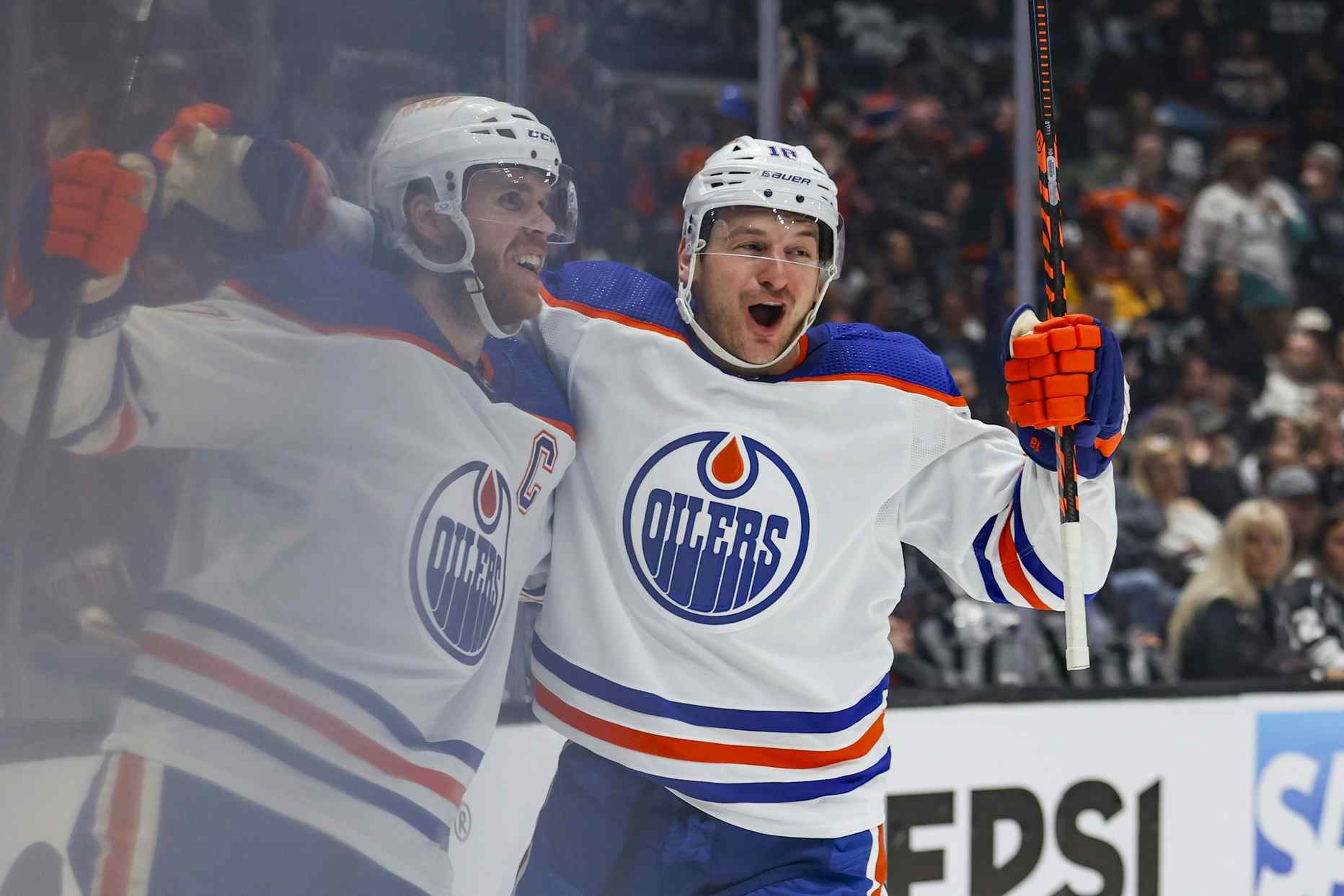The Chicago Blackhawks and the Myths of Winning in the West

Build down the middle. Up front, this means having good
centres. Talented wingers are a nice luxury, but a 1-2 punch at the middle of
the ice is vital to victory.
centres. Talented wingers are a nice luxury, but a 1-2 punch at the middle of
the ice is vital to victory.
Size matters. It’s important to have a big team overall, but
even more important to have big centres and big defencemen, so as to combat the
bruising cycle game of the Kings and Ducks and Blues.
even more important to have big centres and big defencemen, so as to combat the
bruising cycle game of the Kings and Ducks and Blues.
And please, just ignore those Chicago Blackhawks.
These kinds of comments are commonplace. Scroll down to the
comments section and in due time there will be plenty of posters arguing that
good centres and lots of size are vital ingredients to a winning hockey team in
the Western Conference, and they’ll have all kinds of reasons why the
Blackhawks are able to win with one centre and a collection of smurfs.
comments section and in due time there will be plenty of posters arguing that
good centres and lots of size are vital ingredients to a winning hockey team in
the Western Conference, and they’ll have all kinds of reasons why the
Blackhawks are able to win with one centre and a collection of smurfs.
There’s a reason these arguments retain their life. For one,
there’s some validity to them: All else being equal, bigger is better. Having
good centres is vastly preferable to not having good centres.
there’s some validity to them: All else being equal, bigger is better. Having
good centres is vastly preferable to not having good centres.
They also tend to be self-perpetuating. In a league that has
always valued size and in which the ‘build down the middle’ philosophy is
conventional wisdom, good teams and bad teams alike tend to follow those maxims.
The teams that perform well (Los Angeles was the
biggest club in the league entering the season) get held up as examples of
the necessity of following this path; those that don’t (Winnipeg, Arizona,
Colorado and Buffalo rounded out the top-five teams by weight) get conveniently
forgotten.
always valued size and in which the ‘build down the middle’ philosophy is
conventional wisdom, good teams and bad teams alike tend to follow those maxims.
The teams that perform well (Los Angeles was the
biggest club in the league entering the season) get held up as examples of
the necessity of following this path; those that don’t (Winnipeg, Arizona,
Colorado and Buffalo rounded out the top-five teams by weight) get conveniently
forgotten.
The conventional wisdom about what matters in hockey has
been increasingly scrutinized in recent years, as the community around the
sport starts looking at evidence of what works and what doesn’t rather than
simply repeating the mantras of its elders.
been increasingly scrutinized in recent years, as the community around the
sport starts looking at evidence of what works and what doesn’t rather than
simply repeating the mantras of its elders.
For the Edmonton Oilers, and for the league’s other 29 teams,
exploiting inefficiencies is key to success now and for the foreseeable future.
For example: If size, skating and hockey sense are all equally important but
the rest of the league overvalues one, it becomes important to stock up on the
other two.
exploiting inefficiencies is key to success now and for the foreseeable future.
For example: If size, skating and hockey sense are all equally important but
the rest of the league overvalues one, it becomes important to stock up on the
other two.
That’s why it’s so interesting that the Blackhawks have been
the league’s most successful team in recent years despite ignoring the
conventional wisdom cited above. Their success rather strongly suggests that
the league as a whole places too much emphasis on areas like size and strength
down the middle.
the league’s most successful team in recent years despite ignoring the
conventional wisdom cited above. Their success rather strongly suggests that
the league as a whole places too much emphasis on areas like size and strength
down the middle.
The 2015 Blackhawks
The smallest team in
the league can win the Stanley Cup. According to James Mirtle, the Blackhawks
entered last season as the 29th-heaviest team in the NHL, ahead of only the
Calgary Flames. They entered this season the 27th-heaviest. The fact that they
weren’t merely average, but rather at the far end of the NHL’s size curve (both
editions of the team were more than 10 pounds lighter, per player, than the
Kings) make it clear that a team can be undersized and still win hockey games.
Even in the West.
the league can win the Stanley Cup. According to James Mirtle, the Blackhawks
entered last season as the 29th-heaviest team in the NHL, ahead of only the
Calgary Flames. They entered this season the 27th-heaviest. The fact that they
weren’t merely average, but rather at the far end of the NHL’s size curve (both
editions of the team were more than 10 pounds lighter, per player, than the
Kings) make it clear that a team can be undersized and still win hockey games.
Even in the West.
Pick a position;
those guys can be small. Chicago’s centres were tiny. Jonathan Toews was
listed at the heaviest weight (201 pounds) and was the only guy over 200 pounds,
while players like Andrew Shaw and Marcus Kruger were under 190 pounds. Three
of the team’s top four defencemen in 2015 were listed at less than 200 pounds;
seven of the nine blue-liners overall came in under that weight. Of the team’s
top-seven scoring forwards none weighed more than 210 pounds, with Marian Hossa
(207 pounds), Brandon Saad (202 pounds) and Toews leading the way. the centres
were small, the defence was small, and the top forwards overall were small. Not
only can the players in one area be small; the players in every position can be
small and the team can still succeed.
those guys can be small. Chicago’s centres were tiny. Jonathan Toews was
listed at the heaviest weight (201 pounds) and was the only guy over 200 pounds,
while players like Andrew Shaw and Marcus Kruger were under 190 pounds. Three
of the team’s top four defencemen in 2015 were listed at less than 200 pounds;
seven of the nine blue-liners overall came in under that weight. Of the team’s
top-seven scoring forwards none weighed more than 210 pounds, with Marian Hossa
(207 pounds), Brandon Saad (202 pounds) and Toews leading the way. the centres
were small, the defence was small, and the top forwards overall were small. Not
only can the players in one area be small; the players in every position can be
small and the team can still succeed.
A line can be built
around a winger. Chicago has run two primary lines forever. Toews is an
elite centre and along with Hossa has formed what is perhaps the single-best
two-way line in hockey. The primary offensive line has featured a revolving
door of centres, though, and been built primarily on the wizardry of right wing
Patrick Kane (177 pounds, if you were wondering). The Blackhawks may finally
have nailed down the No. 2 centre job with the addition of middle-sixer Artem
Anisimov, but they were fine with whatever random fill-in player they iced at
that position as long as Kane was on the wing to carry the load.
around a winger. Chicago has run two primary lines forever. Toews is an
elite centre and along with Hossa has formed what is perhaps the single-best
two-way line in hockey. The primary offensive line has featured a revolving
door of centres, though, and been built primarily on the wizardry of right wing
Patrick Kane (177 pounds, if you were wondering). The Blackhawks may finally
have nailed down the No. 2 centre job with the addition of middle-sixer Artem
Anisimov, but they were fine with whatever random fill-in player they iced at
that position as long as Kane was on the wing to carry the load.
Applying this to the Oilers

Edmonton has bulked up significantly under general manager
Peter Chiarelli, but mostly those moves have been intelligent ones. I’ve written about this before, but players like Patrick Maroon, Zack Kassian and
Eric Gryba were all extremely reasonable bets in terms of both acquisition cost
and cap hit. Size is a good thing, and as long as the Oilers avoid paying a
premium for it they certainly should add it.
Peter Chiarelli, but mostly those moves have been intelligent ones. I’ve written about this before, but players like Patrick Maroon, Zack Kassian and
Eric Gryba were all extremely reasonable bets in terms of both acquisition cost
and cap hit. Size is a good thing, and as long as the Oilers avoid paying a
premium for it they certainly should add it.
The trap to avoid is overpaying for size, something Edmonton
has had trouble with in the past. Drafting Mitch Moroz or trying to sign David Clarkson are two pretty great examples of the kind of thing I’m talking about.
has had trouble with in the past. Drafting Mitch Moroz or trying to sign David Clarkson are two pretty great examples of the kind of thing I’m talking about.
Additionally, this means that if the trade return justifies
it, it’s possible to move out big players. I wouldn’t be particularly keen to
deal Leon Draisaitl or Darnell Nurse, but they shouldn’t be seen as
untouchable. There’s some reason to think that the return on a player like
Draisaitl would exceed that of a Taylor Hall or Ryan Nugent-Hopkins and if on
balance the return for a Draisaitl or Nurse were rich enough to warrant making
a trade then Edmonton should take the deal.
it, it’s possible to move out big players. I wouldn’t be particularly keen to
deal Leon Draisaitl or Darnell Nurse, but they shouldn’t be seen as
untouchable. There’s some reason to think that the return on a player like
Draisaitl would exceed that of a Taylor Hall or Ryan Nugent-Hopkins and if on
balance the return for a Draisaitl or Nurse were rich enough to warrant making
a trade then Edmonton should take the deal.
Finally, the Oilers are blessed with centre depth for the
first time in ages, and that is undeniably a good thing and a position that
should be maintained if at all possible. However, it would be a mistake to sell
Hall short just because he happens to be a left wing. After Connor McDavid,
Hall is the Oilers’ best scorer and best puck-possession player at 5-on-5. That
doesn’t make him absolutely untouchable, but it does suggest to me that he
should be regarded as the linchpin of Edmonton’s second line.
first time in ages, and that is undeniably a good thing and a position that
should be maintained if at all possible. However, it would be a mistake to sell
Hall short just because he happens to be a left wing. After Connor McDavid,
Hall is the Oilers’ best scorer and best puck-possession player at 5-on-5. That
doesn’t make him absolutely untouchable, but it does suggest to me that he
should be regarded as the linchpin of Edmonton’s second line.
RECENTLY BY JONATHAN WILLIS
Recent articles from Jonathan Willis





